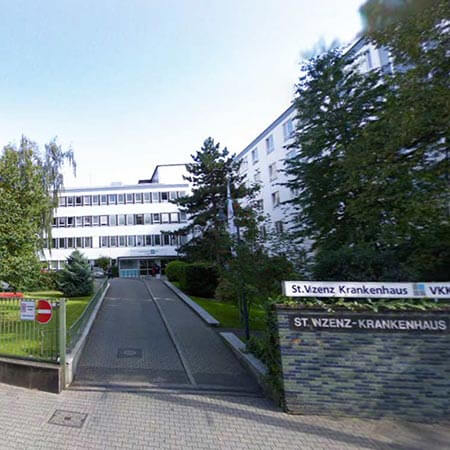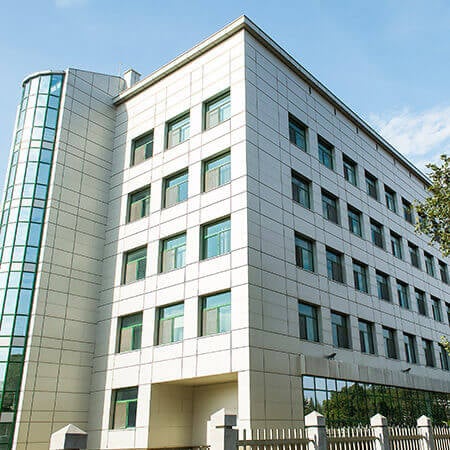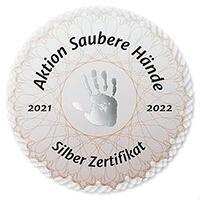Ankle arthrosis is a degenerative process, which leads to the destruction of cartilage, the development of chronic pain and dysfunction of the lower extremity. As a rule, the disease is of traumatic origin. At the early stages, doctors use conservative treatment methods, but as the disease progresses, they have to resort to radical surgical procedures: arthrodesis and ankle replacement. If you suffer from arthrosis, you can undergo treatment in Germany and get reliable results.
Content
- How does ankle arthrosis develop?
- Conservative therapy
- Arthroscopic surgery
- Ankle arthrodesis
- Arthroscopic arthrodesis
- Advantages and disadvantages of arthrodesis
- Ankle replacement
- Why is it worth undergoing treatment in Germany?
- Treatment in Germany with Booking Health
How does ankle arthrosis develop?
Arthrosis usually does not affect a normal ankle. It can be caused by injury or disease.
Injury is the main cause of arthrosis. The ankle joint is one of the most traumatized. It accounts for about 25% of all joint injuries. The number of ankle injuries among athletes reaches 45%.
It is not always possible to completely restore the joint after the injury. Even in the case of its functional restoration, there can be some processes that eventually lead to arthrosis. Scar tissue grows inside the joint and excrescences appear. These result in impingement syndrome – friction of tissues inside the joint when walking.
It is impingement that is the main mechanism for arthrosis development. The hyaline cartilage is gradually damaged during friction, the ligaments become dissociated, the synovial membrane becomes inflamed and thickened. A person feels pain and suffers from impaired limb function. The further pathology progression causes a complete destruction of the hyaline cartilage, damage to the bone located under it, and the development of excrescences on the anterior surface of the tibia. The patient feels pain not only when walking, but also at rest. The function of the joint is irreversibly impaired.
Ankle arthritis is damage to the ankle joint cartilage.
Ankle arthritis treatment includes pain and anti-inflammatory drugs, physical therapy, and surgery.
Cost of treatment with stem cell therapy is from €19,700, cost of total ankle replacement is from €6,181. You can find other prices on Booking Health website.
The best hospitals in Germany are:
- University Hospital of Ludwig Maximilian University of Munich
- University Hospital Frankfurt am Main
- Clinic of Advanced Biological Medicine Frankfurt-am-Main
- University Hospital Rechts der Isar Munich
- Helios Hospital Krefeld.
Conservative therapy
Osteoarthritis of the ankle at the early stage can be treated with conservative methods. The main therapeutic approaches include:
- Nonsteroidal anti-inflammatory drugs for pain relief in the foot and ankle.
- Orthoses, orthopedic shoes – help reduce the load on the ankle and foot, facilitate walking, relieve pain, slow down joint degeneration.
- Physiotherapy – helps improve blood circulation in the foot and lower leg, as well as has a moderate analgesic effect.
- Therapeutic exercises to strengthen the muscles of the lower limb.
The conservative treatment of ankle joints also involves the use of the very latest achievements of regenerative medicine. Doctors inject platelet-rich plasma or mesenchymal stem cells into the joint. They stimulate tissue regeneration, thereby allowing for long-term improvement.
Arthroscopic surgery
Arthroscopy in ankle arthritis can be performed for both diagnostic and therapeutic purposes. The essence of the procedure is that the doctor inserts a thin tube with a camera inside the joint. He can examine all intra-articular structures, assess the severity of the disease and plan further treatment.
Arthroscopy is effective for grade 1-2 ankle arthritis. It can not only eliminate pain, but even slow down the further development of arthrosis by eliminating impingement.
When performing arthroscopy, the doctor can carry out the following manipulations:
- Excision of a part of the synovium, which is constantly inflamed, as well as dissection of adhesions – fused tissues inside the joint.
- Resection of osteophytes – bone growths on the surface of the tibia, which cause friction when walking, cause pain and damage the tissues of the ankle joint.
- Cartilage resurfacing for better sliding, reducing friction and slowing down degenerative processes.
- Tunnelization or creation of microfractures in the subchondral bone – the bone located under the cartilage is damaged in order to stimulate the development of fibrous cartilage in this area.
Arthroscopy not only relieves pain, but also improves the ankle joint function, although its complete recovery usually does not occur. Surgery may delay the need for such more serious interventions as arthrodesis or ankle replacement. Patients recover quickly after these types of surgery.
Arthroscopy cannot be performed for grade 3-4 arthritis. In this case, even a symptomatic effect is doubtful. The patients with advanced arthritis require radical types of interventions: arthrodesis and ankle replacement.
Ankle arthrodesis
Arthrodesis is the standard treatment for severe ankle arthritis. In advanced stages of the disease, this surgical procedure is performed in most patients.
Arthrodesis is an operation to form bone ankylosis (immobility) of the ankle joint. The doctor fixes the ankle and the person can no longer flex and extend the ankle. The foot is usually at a 90-degree angle to the ankle. In this case, the person must constantly wear shoes without heels. In women, the angle can be increased by 15-20 degrees, if desired. In this case, it will be possible to wear low heel shoes. However, after this type of surgery, it is impossible to use shoes without heels, as there is pain in the forefoot, and with regular wearing of such shoes, arthrosis of the foot joints rapidly develops.
In the classic version, the surgery is performed through a large incision in the ankle. The doctor resects ligaments, scars, and cartilage tissue. He connects the bones with needles, pins or screws after which a plaster cast is applied. The external fixation devices are also often used. They are removed only after complete restoration of bone tissue – after about 3 months.
Criteria for surgery success:
- Person can walk a distance of 1.5 km or more.
- He does not use support devices or orthoses.
- No pain when walking or at rest.
- No restrictions in daily life.
After arthrodesis, most people can return to an active life, do physical labor and sports.
Arthroscopic arthrodesis
In addition to the standard open surgery, doctors abroad also perform arthroscopic surgical interventions for ankle arthrodesis. The surgeon makes short incisions, through which he inserts thin long instruments and the optical system. Arthroscopy has some limitations: the doctor cannot perform bone block transplantation in case of bone deficiency, but most patients do not need it.
Arthroscopy is comparable in efficiency to classical open surgery. Moreover, it has many advantages:
- Bones heal faster.
- Person loses less blood.
- Better aesthetic effect: no large scars on the ankle.
- Less pain in the postoperative period.
- Reduced hospitalization period.
- Early activation is possible.
- Muscle atrophy is less severe, and it is easier to restore muscles.
- Not only is early rehabilitation faster, but also late rehabilitation is accelerated.
Advantages and disadvantages of arthrodesis
Arthrodesis has a number of advantages over replacement surgery. This operation is more reliable: the results last for life, while the artificial joint can wear out after several years or decades. The surgical intervention is easier to perform: this operation is performed in any orthopedic hospital. The cost of treatment for ankle arthritis is lower.
However, the method also has many disadvantages, forcing doctors in developed countries to increasingly opt for ankle replacement:
- Long treatment: the period of immobilization of the limb with a plaster cast lasts up to 3 months, and the devices for external bone fixation are often used. A person cannot return to active life and work for a long time. After the immobilization period, muscle atrophy occurs, so the patient needs many muscle-building workouts.
- Limb function cannot be fully restored. The ankle joint is fixed, which makes walking uncomfortable. The functional defect is especially noticeable when walking or running fast.
- Only one type of shoes can be worn: without a heel or with a heel of a certain height, depending on the angle at which the doctor placed the lower leg towards the foot.
- In the future, the patient may require foot surgery – the foot is constantly overloaded when walking. As a result, arthritis of the foot develops after 10 years in 15% of patients.
- Other large joints in the lower limbs are overloaded. After arthrodesis, there is an increased risk that the person will need knee or hip surgery due to the development of arthritis.
Ankle replacement
Ankle replacement surgery is technically complex and not always successful, but it is one of the standard interventions for arthrosis in Germany. Doctors have vast experience in its performance. As a result of the surgery, most patients completely get rid of pain and restore the function of the ankle.
Ankle replacement has the following benefits:
- The best functional result – the artificial joint provides the same range of motion as the patient's own.
- There is no long period of limb immobilization.
- There is no discomfort when walking or running.
- You can wear any shoes.
- Arthrosis of other joints of the lower limb (knee, hip, foot) does not develop after the operation.
Ankle replacement is a technically complex operation, and few orthopedic surgeons have experience in it. However, doctors in Germany perform it on a regular basis. Modern types of endoprostheses wear out slowly, and complications after their implantation are quite rare.
Types of endoprostheses:
- Constrained.
- Unconstrained.
The preference is given to unconstrained endoprostheses. They serve longer, but can be implanted only with the preserved ligamentous apparatus of the joint. In severe cases, the choice can be made in favor of the constrained ankle endoprosthesis.
According to the type of movement, prostheses are:
Polyaxial joints provide better ankle function after surgery. They retain the ability of supination and pronation of the foot. These prostheses are more expensive, but they can serve longer.
Why is it worth undergoing treatment in Germany?
Treatment of ankle in Germany is safe, effective, and restores limb function. Both conservative and surgical methods are used. There are several reasons why it is worth undergoing treatment in Germany:
- At the early stages of arthrosis, doctors use cell regenerative therapy that provides long-term results.
- The use of arthroscopic surgeries, which can eliminate most of the symptoms, improve ankle function, and slow the progression of the disease.
- Ankle arthrodesis can be performed arthroscopically instead of a large incision in the leg. This operation solves the problem of ankle arthrosis once and for all.
- To achieve the best functional result, a total ankle replacement is possible. Germany is one of the few countries in the world where this operation is included in the standard treatment of arthrosis.
- Huge experience – about 1,500 ankle replacement surgeries are performed annually in Germany (the same number as in all other European countries).
- The use of the most advanced types of endoprostheses, which will serve for decades.
- Affordable cost of treatment: Germany offers lower prices than many other developed countries.
Treatment in Germany with Booking Health
To undergo treatment of ankle arthritis in Germany, please use the services of Booking Health. On our website, you can see the cost of treatment in different German hospitals, compare prices and book a medical program at a favorable price.
Please contact the Booking Health specialists to undergo treatment in Germany. Here are our benefits for you:
- We will choose the best orthopedic hospital whose doctors specialize in the treatment of ankle joint diseases.
- We will help you overcome the language barrier, establish communication with the German hospital and your attending physician.
- We will reduce the waiting time for the medical care program and book a doctor's appointment on the most suitable dates.
- We will reduce the price. The cost of treatment in Germany will be decreased due to the lack of additional coefficients for foreign patients.
- We will take care of all organizational issues: documents for entering the country, tickets, transfer from the airport, hotel, interpreter, etc.
- We will elaborate a program and translate medical documents into German. You do not have to undergo previously performed diagnostic procedures.
- We will provide communication with the hospital upon the completion of treatment in Germany.
- We will organize additional medical examinations, treatment in Germany or rehabilitation, if necessary.
- We will buy medicines in Germany and forward them to your native country.
- We will help you keep in touch with the hospital upon the completion of treatment in Germany.
Booking Health makes treatment in Germany easier, faster and cheaper. We will fully organize your trip, and you will only have to focus on restoring your health.
Authors: Dr. Vadim Zhiliuk, Dr. Sergey Pashchenko















